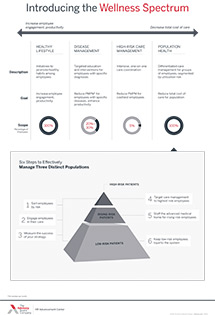Auto logout in seconds.
Continue LogoutEditor's note: This popular story from the Daily Briefing's archives was republished on Dec. 10, 2018.
As the United States deals with a particularly severe flu season, CBS News asked a geneticist to identify the four most germ-ridden spaces in the average office.
The germs on a plane—and how to avoid them
To identify general germ hot spots, Chris Mason, a geneticist at Weill Cornell Medicine, used a method called shotgun sequencing to test various workplace areas and surfaces to determine where viruses and bacteria might lurk. According to Mason, germs are most likely to congregate in "high touch" areas, such as door handles, the sink in the kitchen area, or on elevator buttons. (And according to the CDC, influenza germs can live on some surfaces for up to a day, which means that if you touch a contaminated surface and then touch your eyes, mouth, or nose within that timeframe, you risk catching the virus.)
For the test, Mason and CBS News focused on two common work areas—the break room and the conference room—as well as two common workplace items—stairwell railings and computer keyboards. They then ranked them in order of germ-contamination, based on a lab analysis.
The most contaminated workplace areas
Although none of the areas tested had the flu virus, they did host a swarm of other germs and bacteria, CBS News reports.
According to CBS News, the most contaminated areas ranked by contamination levels were:
- Computer keyboards. Based on lab results, keyboards were the most contaminated surface of the four tested areas. Mason recommended workers wipe down their computer keyboard every day. In fact, according to the lab results, just wiping down the surface with a disinfecting wipe reduced the amount of bacteria and viruses by over 91%;
- The break room. According to Mason, the break room—the second-most contaminated area, based on lab results—is an area where "people touch a lot [of surfaces], [and] things splash around. … Essentially things can grow because it's a moist enough area";
- The stair railing. Stair railings came in an unexpected third, according to test results, largely because they were made of steel. Mason explained that while lots of hands touch a stair railing, making it a potential "high touch" area, viruses in general "do not live long on steel, neither do most bacteria."
- The conference room. The conference room had the lowest levels of contamination based on lab tests—but that doesn't mean it's a safe spot, Mason said. According to Mason, the fabric-covered chairs in your typical conference room are "basically like a big sponge" for absorbing microbes. "Basically, cells and viruses and other sort of entities can build up in the small porous areas," he said (CBS News, 2/15; Knowles, Becker's Clinical Leadership & Infection Control, 2/15).
Next: The germs on a plane—and how to avoid them
Download this infographic to learn about both the obvious and less obvious locations where germs on planes are rampant.
Don't miss out on the latest Advisory Board insights
Create your free account to access 1 resource, including the latest research and webinars.
Want access without creating an account?
You have 1 free members-only resource remaining this month.
1 free members-only resources remaining
1 free members-only resources remaining
You've reached your limit of free insights
Become a member to access all of Advisory Board's resources, events, and experts
Never miss out on the latest innovative health care content tailored to you.
Benefits include:
You've reached your limit of free insights
Become a member to access all of Advisory Board's resources, events, and experts
Never miss out on the latest innovative health care content tailored to you.
Benefits include:
This content is available through your Curated Research partnership with Advisory Board. Click on ‘view this resource’ to read the full piece
Email ask@advisory.com to learn more
Click on ‘Become a Member’ to learn about the benefits of a Full-Access partnership with Advisory Board
Never miss out on the latest innovative health care content tailored to you.
Benefits Include:
This is for members only. Learn more.
Click on ‘Become a Member’ to learn about the benefits of a Full-Access partnership with Advisory Board
Never miss out on the latest innovative health care content tailored to you.


